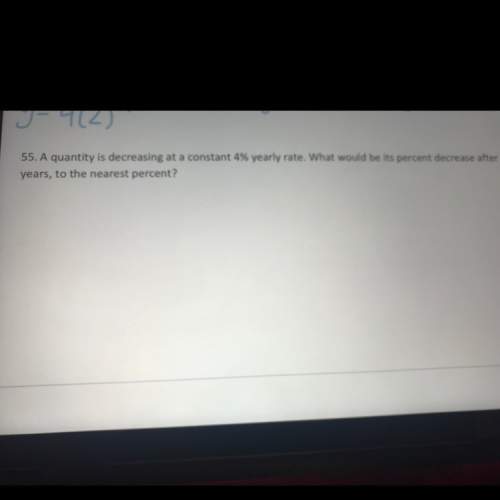What is the explicit formula for the sequence?
−1, 0, 1, 2, 3, . . .
an = n...

Mathematics, 11.02.2020 17:26 GalaxyCraft4991
What is the explicit formula for the sequence?
−1, 0, 1, 2, 3, . . .
an = n + 2
an = n − 2
an = an−1 − 2, where a1 = 3
an = an−1 − 2, where a1 = −1

Answers: 1


Other questions on the subject: Mathematics

Mathematics, 21.06.2019 13:20, animegirl02
What is the equation and solution for the sentence? the sum of a number and thirty-one is one hundred thirteen. write the equation as n-31=113 and subtract 31 from both sides. the answer is 82. write the equation as n+31=113 and subtract 31 from both sides. the answer is 82. write the equation as n+31=113 and add 31 to both sides. the answer is 144. write the equation as n-31=113 and add 31 to both sides. the answer is 144.
Answers: 1

Mathematics, 21.06.2019 14:00, hockeykid7583
The axis of symmetry for the graph of the function f(x)=1/4^2+bx +10 is x=6. what is the value of b?
Answers: 1

Mathematics, 21.06.2019 19:00, Svetakotok
Identify the conclusion of the conditional statement. if you live in phoenix, then you live in arizona.
Answers: 1

Mathematics, 21.06.2019 20:00, ismailear18
Anyone? 15m is what percent of 60m; 3m; 30m; 1.5 km?
Answers: 1
You know the right answer?
Questions in other subjects:


Social Studies, 09.12.2019 03:31

Biology, 09.12.2019 03:31




Mathematics, 09.12.2019 03:31

English, 09.12.2019 03:31


 = n - 2
= n - 2


